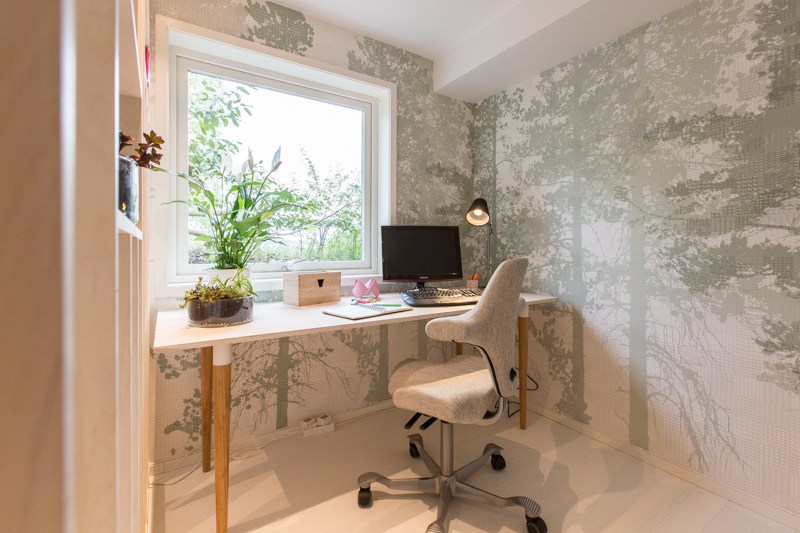The Biophilic Office
The World Health Organisation expects stress-related illnesses such as mental health disorders and cardio-vascular disease to be the two largest contributors to disease by 2020. As 90% of people's lives is spent in buildings, this means the built environment can play a significant part in preventing ill health and promoting a positive approach to health and wellbeing.
Biophilia (meaning a love of nature) focuses on a human’s innate attraction to nature and natural processes. American biologist and researcher Edward O. Wilson introduced and popularised this hypothesis in his book, 'Biophilia' (1984) defining this as 'the urge to affiliate with other forms of life'.
Biophilic design uses these ideas as principles to create a human-centred approach that when applied improves many of the spaces that are lived and worked in today, with numerous benefits to health and wellbeing.
Incorporating direct or indirect elements of nature into the built environment have been demonstrated to reduce stress, blood pressure levels and heart rates, whilst increasing productivity, creativity and self-reported rates of wellbeing.
In May 2017, BRE announced that they are working closely with architect and interior designer Oliver Heath on a project to evaluate the value of biophilic design to the workplace environment. The project consists of a plan to take a tired and aging 1980s office building on the BRE campus and refurbish it according to biophilic design principles.
The project is named The Biophilic Office and will show how quantified improvements in productivity and wellness can bring rewards for landlords, occupiers, developers and all those concerned with the office environment.
Researchers will carry out a year of pre-refurbishment and a year of post-refurbishment monitoring, evaluating the office environment for daylight, lighting, indoor air quality, acoustic, thermal and humidity comfort. Office occupants will undergo a confidential health evaluation, sign up to a series of online questionnaires and surveys and receive wearable technology to monitor key health metrics.
A design strategy will be developed including tiers of interventions in zones within the office. The products used will undergo laboratory evaluation to establish whether a health and wellbeing potential can be quantified at products level.
This article was originally published here on 9 May 2017 by BRE Buzz. It was written by Simon Guy.
--BRE Buzz
[edit] Related articles on Designing Buildings Wiki
- All about wellness.
- BRE Buzz articles on Designing Buildings Wiki.
- Biophilia and building design.
- Biophilic design.
- Biophilic design and sustainability.
- Biophilic design research.
- Biophilic design - why it matters.
- Biophilic gym.
- Building related illness.
- Green infrastructure.
- Health and productivity in sustainable buildings.
- Temple Farm Development.
- Wellbeing.
- Wellbeing and creativity in workplace design - case studies.
- What we know about wellbeing.
- White Collar Factory.
- Wood and healthy office spaces.
Featured articles and news
RTPI leader to become new CIOB Chief Executive Officer
Dr Victoria Hills MRTPI, FICE to take over after Caroline Gumble’s departure.
Social and affordable housing, a long term plan for delivery
The “Delivering a Decade of Renewal for Social and Affordable Housing” strategy sets out future path.
A change to adoptive architecture
Effects of global weather warming on architectural detailing, material choice and human interaction.
The proposed publicly owned and backed subsidiary of Homes England, to facilitate new homes.
How big is the problem and what can we do to mitigate the effects?
Overheating guidance and tools for building designers
A number of cool guides to help with the heat.
The UK's Modern Industrial Strategy: A 10 year plan
Previous consultation criticism, current key elements and general support with some persisting reservations.
Building Safety Regulator reforms
New roles, new staff and a new fast track service pave the way for a single construction regulator.
Architectural Technologist CPDs and Communications
CIAT CPD… and how you can do it!
Cooling centres and cool spaces
Managing extreme heat in cities by directing the public to places for heat stress relief and water sources.
Winter gardens: A brief history and warm variations
Extending the season with glass in different forms and terms.
Restoring Great Yarmouth's Winter Gardens
Transforming one of the least sustainable constructions imaginable.
Construction Skills Mission Board launch sector drive
Newly formed government and industry collaboration set strategy for recruiting an additional 100,000 construction workers a year.
New Architects Code comes into effect in September 2025
ARB Architects Code of Conduct and Practice available with ongoing consultation regarding guidance.
Welsh Skills Body (Medr) launches ambitious plan
The new skills body brings together funding and regulation of tertiary education and research for the devolved nation.
Paul Gandy FCIOB announced as next CIOB President
Former Tilbury Douglas CEO takes helm.
UK Infrastructure: A 10 Year Strategy. In brief with reactions
With the National Infrastructure and Service Transformation Authority (NISTA).

























Comments